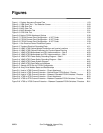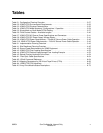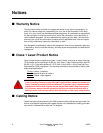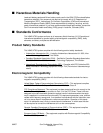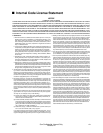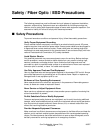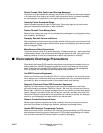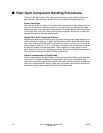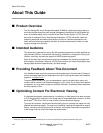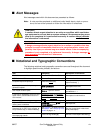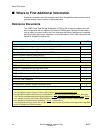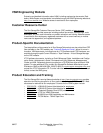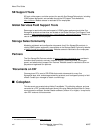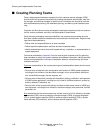xvii Sun Confidential: Internal Only 96257
Revision A
■ Fiber Optic Component Handling Precautions
To prevent damage to optical fiber cables and connectors, and to mitigate inherent haz-
ards from laser-light emissions, always follow these general handling precautions:
Protect Your Eyes
Never aim the output of a laser, or of an optical fiber connected to a laser, directly into your
eyes. Do not examine an optical connector on any cable that is still attached to its data
transmission port, since laser light may be present in the cable. Before examining the end
of an optical fiber, verify that no laser-light signals are present. Always cap unused data
transmission ports on channel interface cards.
Handle Fiber Optic Components Gently
Handle fiber cables and connectors gently to prevent damage. Never grasp cables or con-
nectors with pliers or grippers, or attach pulling devices to them. Never bend fiber cables
(e.g., when routing along cable paths or guides) to a radius of <12 mm (<0.5 in.), and do
not coil cables to <96 mm (<3.74 in.) in diameter. Use strain-relief mechanisms to prevent
the weight of cables from damaging fibers. Protect cables from sharp edges or protru-
sions, heat sources, and other damaging conditions. Ensure that equipment openings and
floor cutouts have protective edging at cable contact points.
Prevent Contamination of Cable Ends
Avoid touching the core of optical cables, as this can contaminate fibers and prevent light
transmission. If a cable-end becomes contaminated, remove any loose debris using
canned air or by gently tapping the connector, then clean the cable-end with an approved
cleaning kit. Leave protective caps on cable-ends until cables are attached to a connector;
after disconnecting cables, always reinstall clean protective caps.



